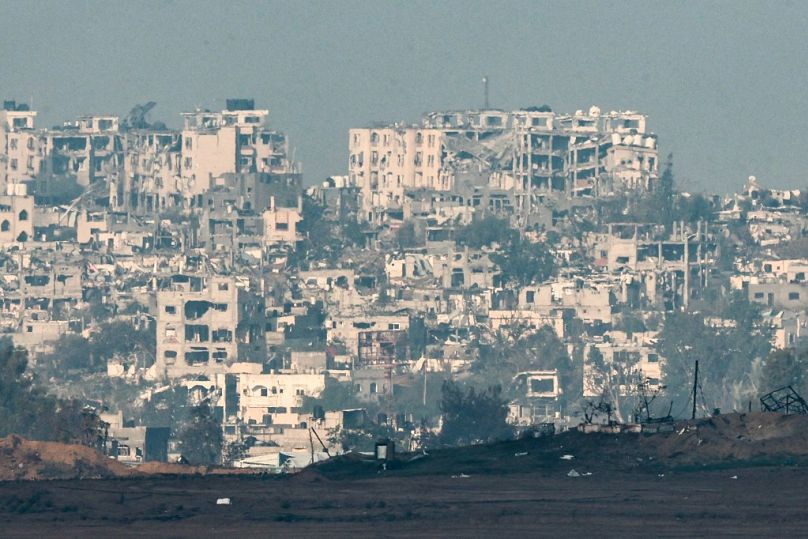As attacks intensify in and around Gaza’s second-largest city, the UN warns of a catastrophic humanitarian situation.
Israel's army surrounded Khan Younes in the south of the Gaza Strip on Wednesday, where some of the most intense fighting in the war against Hamas has been raging.
The Israeli Defence Force (IDF) claimed to have killed "most of the senior commanders" of the Hamas military, releasing a photo of five purported senior officials of the Palestinian movement it "eliminated".
Since the start of the ground offensive on 27 October in northern Gaza, the IDF has extended its ground operations to the entire territory.
Israel initially ordered Palestinian civilians to evacuate southwards to escape the fighting, though they are now under fire in this part of the besieged enclave.
“We have secured many Hamas strongholds in the northern Gaza Strip, and we are now carrying out operations against its strongholds in the south,” Israeli Army Chief of Staff Herzi Halevi said in a statement.
“Our forces found weapons in almost every building and house, terrorists in many houses and confronted them,” he added.
Sources from Hamas and Islamic Jihad said their fighters were waging violent clashes with Israeli troops to prevent them from entering Khan Younis and areas east of the city, as well as in nearby refugee camps.
According to the Hamas government, artillery fire caused "dozens of deaths and injuries" during the night from Tuesday to Wednesday in several villages east of Khan Younis, with the Israeli army also attacking several other areas in the Gaza Strip.
Palestinian authorities said Israeli airstrikes against the Nousseirat refugee camp, in the centre of the territory, left six dead and 14 injured. T
The same source claimed other strikes on the Jabalia camp left several dead and injured, and the director of a clinic in Khan Younis, Ramez al-Najjar, was killed in an Israeli raid on his home.
Catastrophic humanitarian situation
Following the end of a seven-day truce on 1 December, hundreds of thousands of civilians have continued to flee south into an increasingly cramped perimeter near the closed border with Egypt, where they face a catastrophic humanitarian situation.
“Here we are, wandering in the vast expanses of God's earth, looking for a place to take refuge. It seems that there is no place to shelter us,” said Oumm Mahmud Tanasi, a resident of Khan Younis on the way to Rafah, on the border with Egypt.
"No place is safe in Gaza. Not hospitals, not shelters, not refugee camps. No one is safe. Not children. Not health workers. Not humanitarians. This blatant disregard for the foundations of humanity must end,” the UN emergency aid coordinator, Martin Griffiths, was quoted as saying in a statement.
The World Food Program (WFP) stressed the distribution of humanitarian aid was now "almost impossible" in Gaza.
The resumption of hostilities "will only intensify the catastrophic food crisis which already threatens to overwhelm the civilian population, they added.
Help cut off
Rafah is now the only place in the territory where humanitarian aid can still be distributed - albeit in limited quantities - according to the United Nations Office for the Coordination of Humanitarian Affairs (OCHA).
Little aid can arrive in Khan Younis, and access to areas further north has been cut off since the resumption of fighting.
While the Israeli army drops leaflets every day on Khan Younis warning of an imminent bombing, ordering residents to leave their neighbourhood, the UN has deemed it "impossible" to set up secure zones.
According to the UN, 1.9 million people, or around 85 per cent of the population, have been displaced by the war in the Gaza Strip where more than half of the homes are destroyed or damaged.












